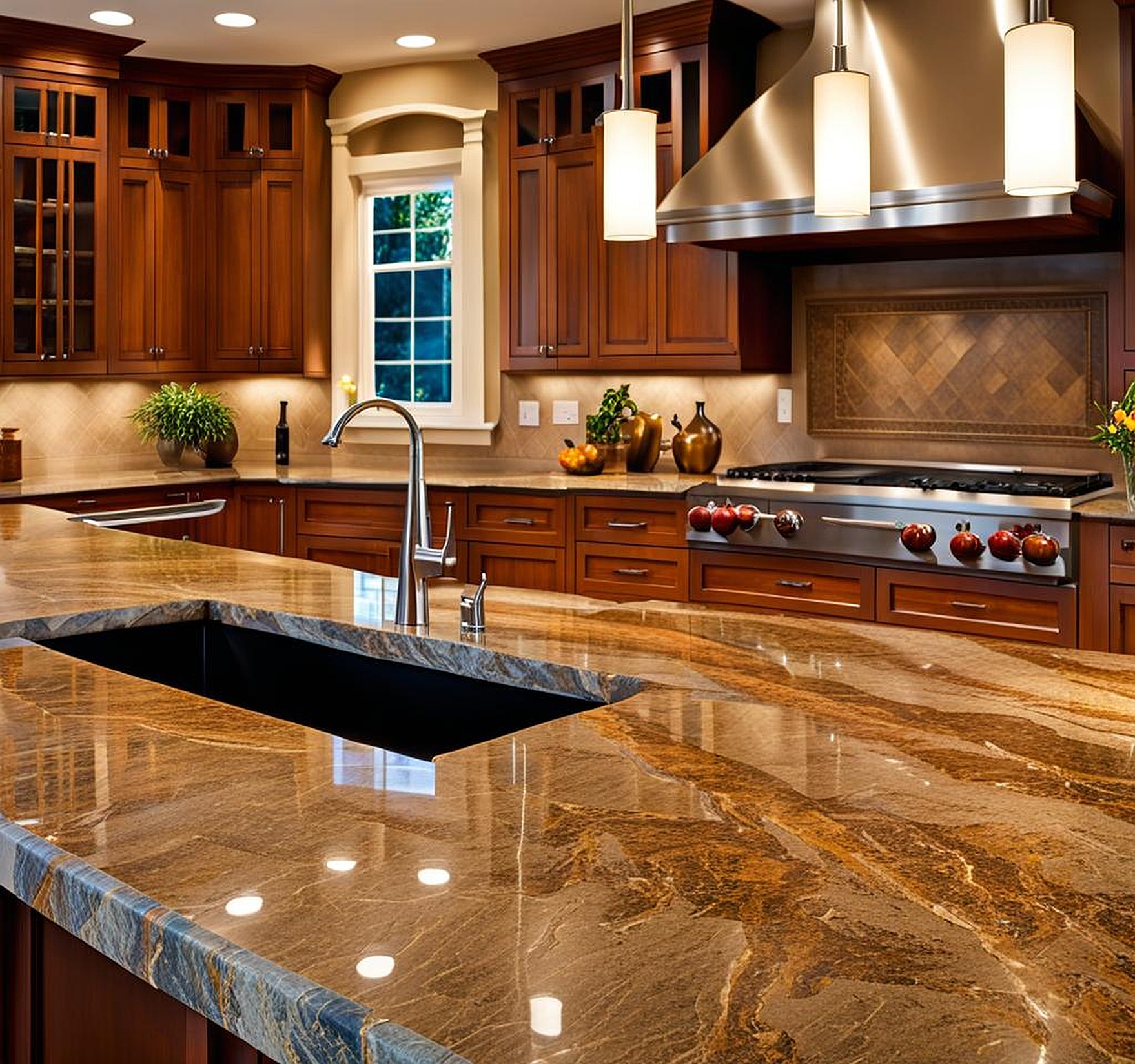Kitchen design can start with a bold choice, such as a kitchen island countertop that contrasts with the surrounding surfaces. This simple yet impactful decision can breathe new life into your culinary haven, transforming it from a mundane space into a visually captivating masterpiece that seamlessly blends form and function. The kitchen island countertop different color trend has taken the design world by storm, allowing homeowners to showcase their unique style while enjoying the practical benefits of a well-planned workspace.
The Importance of a Contrasting Kitchen Island Countertop
A kitchen island countertop that differs in color from the surrounding surfaces serves as a focal point, instantly drawing the eye and adding depth to the overall design. This strategic use of contrast creates a dynamic interplay of textures and hues, elevating the visual interest and preventing the space from feeling flat or monotonous. By embracing a distinct countertop color for the island, you not only enhance the room’s aesthetic appeal but also establish a defined work area that sets the stage for culinary creativity.
Beyond its visual impact, a contrasting kitchen island countertop offers practical advantages. It naturally delineates the workspace, making it easier to maintain organization and workflow during meal preparation or entertaining. Additionally, the unique surface provides an opportunity to incorporate materials tailored to specific tasks, such as a durable and heat-resistant countertop for hot pots and pans, or a moisture-resistant option for intricate baking projects.
Popular Kitchen Island Countertop Color Options
When it comes to choosing the perfect kitchen island countertop color, the possibilities are virtually endless. Each material and shade brings its unique character and charm to the space, allowing you to create a truly personalized and inviting atmosphere. Let’s explore some of the most popular options:
Granite kitchen island countertops: Renowned for its timeless elegance and durability, granite offers a vast array of colors and patterns to complement any design aesthetic. From sleek black or rich burgundy to earthy tones or intricate veining, granite countertops can effortlessly elevate the island’s visual appeal while withstanding the demands of a busy kitchen.
Wood kitchen island surfaces: Warm and inviting, wood countertops infuse the space with natural charm. Whether you opt for the rustic appeal of oak, the contemporary sophistication of maple, or the rich tones of cherry, a wooden island countertop adds a cozy, organic touch to the heart of your home. These surfaces not only offer a unique aesthetic but also provide a gentle, forgiving surface for food preparation.

Concrete kitchen island countertops: For those seeking a bold, industrial-inspired look, concrete countertops are an excellent choice. Available in a range of colors and finishes, from sleek gray to warm, stained hues, concrete surfaces exude a raw, minimalist charm. Additionally, custom concrete countertops allow you to create truly one-of-a-kind designs, incorporating intricate patterns or even embedded elements for a truly personalized touch.
Factors to Consider When Choosing a Kitchen Island Countertop Color
While the possibilities for kitchen island countertop colors are vast, it’s essential to consider several factors to ensure a cohesive and functional design. First and foremost, the chosen color should complement the overall kitchen color scheme and design style. A stark contrast may work well in a modern, minimalist setting, while a more subtle variation might suit a traditional or farmhouse-inspired kitchen.
Lighting conditions also play a crucial role in determining the perfect countertop color. Natural light can significantly impact the appearance of certain materials, causing some hues to appear warmer or cooler than anticipated. It’s advisable to view samples in the actual space to gauge the color’s true representation and ensure it aligns with your desired ambiance.
Durability and maintenance requirements are equally important considerations when selecting a kitchen island countertop color. While some materials, like granite or quartz, are highly resistant to stains and scratches, others may require more diligent care. Your lifestyle and the anticipated usage of the island should guide your choice to ensure the countertop’s longevity and ease of upkeep.
Once you’ve chosen the perfect kitchen island countertop color, it’s time to seamlessly integrate it into your overall design. One of the most effective approaches is to embrace complementary color combinations, ensuring a harmonious and visually appealing result. For instance, pair a rich, burgundy-hued granite countertop with warm, honey-toned wood cabinetry for a cozy, inviting atmosphere. Alternatively, contrast a crisp, white quartz island surface with deep, charcoal-colored cabinets for a sleek, contemporary look.
When selecting a kitchen island countertop color that contrasts with your cabinetry, consider the cabinet finish as well. Matte surfaces tend to pair beautifully with glossy countertops, creating an interesting interplay of textures and reflections. Conversely, a polished granite or quartz countertop can add a touch of sophistication to rustic, distressed cabinets.
To achieve a truly cohesive and balanced design, extend the color palette to other elements within the kitchen. Coordinate the backsplash, flooring, or even accent pieces like bar stools or pendant lights to tie the entire space together seamlessly. Remember, the key is to strike the perfect balance between contrast and harmony, ensuring that each element complements the others without overwhelming the senses.
Finally, don’t be afraid to add visual interest through textures and patterns. A sleek, solid-colored countertop can be beautifully offset by a patterned tile backsplash or a bold, geometric flooring design. Conversely, a richly veined granite or intricately grained wood countertop can benefit from a more subdued, neutral backdrop to allow its natural beauty to shine.